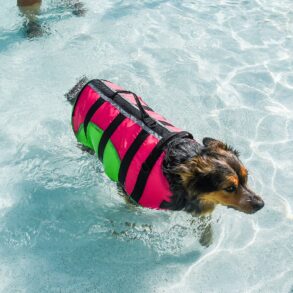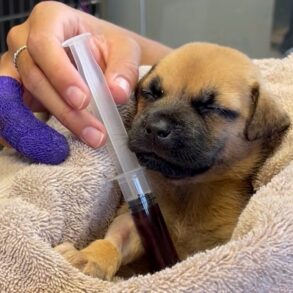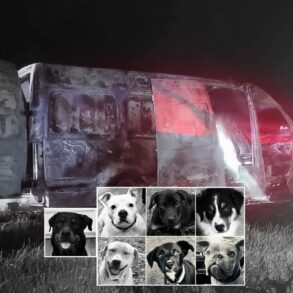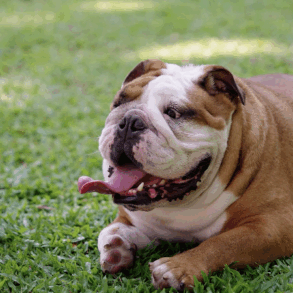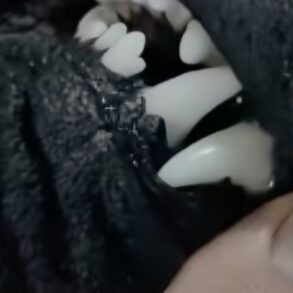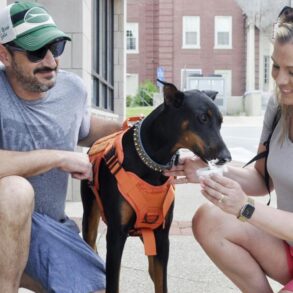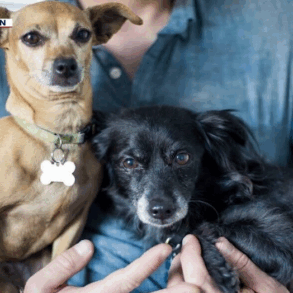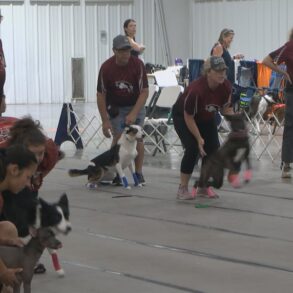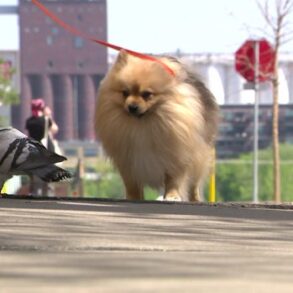Coyotes, like domestic dogs, possess the ability to create the “puppy dog eyes” expression, a facial feature long thought to have evolved exclusively in dogs due to domestication, according to a new study.
The research, published in Royal Society Open Science, focused on the levator anguli oculi medialis (LAOM), a muscle responsible for raising the inner eyebrow—a key component in producing the well-known puppy dog eye expression. This expression has been thought to facilitate communication between dogs and their humans.
“Our findings suggest that the ability to produce ‘puppy dog eyes’ is not a unique product of dog domestication but rather an ancestral trait shared by multiple species in the Canis genus,” lead author Patrick Cunningham said in a statement.
“This raises fascinating questions about the role of facial expressions in communication and survival among wild canids.”

A cute dog begs for food at the kitchen table. Wild coyotes have the same facial muscles as domesticated dogs, allowing them to pull similarly cute faces.
fotyma/Getty
The study examined the facial muscles of coyotes, dogs and gray wolves, with surprising results.
While coyotes and dogs have a well-developed LAOM, the muscle is either modified or absent in gray wolves. The researchers believe the LAOM likely existed in a common ancestor of dogs, coyotes and wolves but was reduced or lost in wolves over time.
Additionally, significant variation in coyote facial muscles was observed, particularly in those related to eyebrow and lip movements. Genetic tests confirmed that the coyote specimens used in the study did not have substantial dog ancestry, eliminating the possibility of crossbreeding influencing the results.
“Our work reveals that coyotes and dogs share not just behavioral similarities, but also a fascinating evolutionary history that includes the ability to make expressions that we once thought were unique to domesticated animals,” Cunningham said.
Cunningham’s team believes this discovery could have wider implications for understanding how facial expressions evolved in mammals. The LAOM may have originally evolved for functions related to vision and eye movements, rather than for human-canine communication, as previously thought.
Future research may expand to other canid species like red wolves and African wild dogs to further explore the role of facial expressions in survival and species communication.
Do you have a tip on a science story that Newsweek should be covering? Do you have a question about dogs? Let us know via science@newsweek.com.
References
Cunningham, P., Shankar, M., vonHoldt, B., Brzeski, K. E., & Kienle, S. S. (2024). Coyotes can do ‘puppy dog eyes’ too: Comparing interspecific variation in Canis facial expression muscles. Royal Society Open Science. https://doi.org/10.1098/rsos.241046
This post was originally published on this site be sure to check out more of their content.










